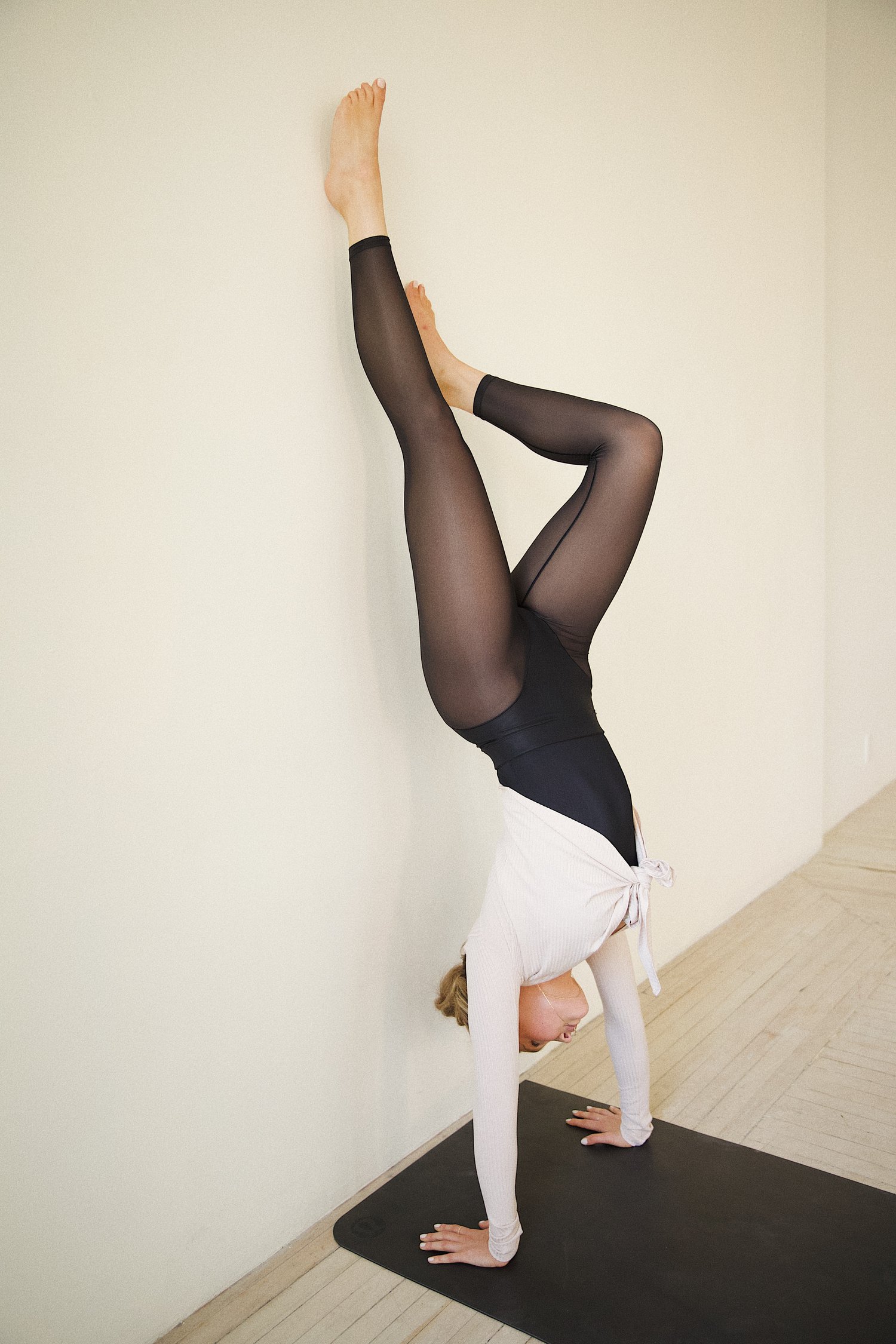
Photo by Lauren Park Photography.
“The stabilization provided by our core allows greater force to be generated by our extremities while minimizing the load on the spine and more distal joints, including the shoulder complex (1). ”KEY POINTS
When comparing how the physical practice of yoga differs from other activities, one of the biggest differentiators is the heavy focus on balance and coordination, as well as the emphasis on rhythmic movement allowing the poses and to flow seamlessly. Shoulder-dominant poses like planks and arm balances remain the focus or peak of many classes. It seems intuitive then that a student’s skill level and strength can directly influence their experience of yoga, including their recruitment of muscles in different poses, which in turn can affect their ability to achieve challenging poses like arm balances. In this article, we pose the question of how core stability is related to shoulder function and the impact this has on achieving arm balancing poses.
Core stability can be defined as the stabilization of the trunk during movement of the limbs that is provided by the strength and endurance of the inner and outer core unit and surrounding musculature – including the abdominal muscles, paraspinals, gluteals, diaphragm, pelvic floor, and hip muscles (1). The core starts to engage in anticipation of upper and lower extremity movement in order to protect the spine – for example, when you raise your arm up, certain parts of your core should start to engage before your arm even starts moving.
The stabilization provided by our core allows greater force to be generated by our extremities while minimizing the load on the spine and more distal joints, including the shoulder complex (1). In yoga, load is maximized when accepting and shifting weight, when changing one’s center of mass, and when perturbations are experienced – both external and internal. This can be experienced when kicking up into an arm balance, moving the legs while balancing, changing position of the arms while balancing, stepping out of an arm balance, and so forth.
Essentially, if the core isn’t doing its job in stabilizing the trunk, the function of the shoulder complex can suffer and result in injury. But how is shoulder function affected?
Let’s explore this relationship further.
One study analyzing the impact of core stability on shoulder function in overhead athletes (athletes performing overhead motions) found that balance was a key factor in preventing shoulder dysfunction – with core stability being a key contributor to balance. These researchers suggest core stability training be done in the context of balance training to prevent and rehab shoulder dysfunction (1). This study was done on a population of overhead athletes, which translates well to arm balances in yoga that predominantly require loading one’s bodyweight in moderate-to-full glenohumeral joint flexion. Findings from another study looking at the effects of a 6-week core stabilization program on shoulder strength support the use of core stability training during the acute phase of shoulder rehabilitation post-injury (2).
The proposed relationship comes down to the transfer of force through connecting body segments – also referred to as our kinetic chains. When performing a function like an arm balance, we need to be able to transfer and accept forces through the joints of our upper extremity all the way to our spine. With a stable core at our center, strong forces can be produced by our upper and lower body and loads can be accepted and transferred through our joints with minimal impact to the joints of our shoulder, spine, and extremities (2).
Overall, if we can generate greater force from our shoulder complex during an arm balancing pose using stabilization from our core, we can better protect the weight-bearing joints of our hands, wrists, shoulders, and spine by reducing the load they accept.
Arm balancing poses typically require loading through the shoulders, sometimes in overhead positions
Core stabilization allows the shoulders to generate greater force while maintaining a stable and protected central unit around our spine – this allows for dynamic movement of the extremities and forces to be transmitted while minimizing impact to the spine, shoulder, and distal joints (hand, wrist, elbows)
To improve function (stable loading) of the shoulder complex during arm balances, core stability training in the context of balance is highly encouraged